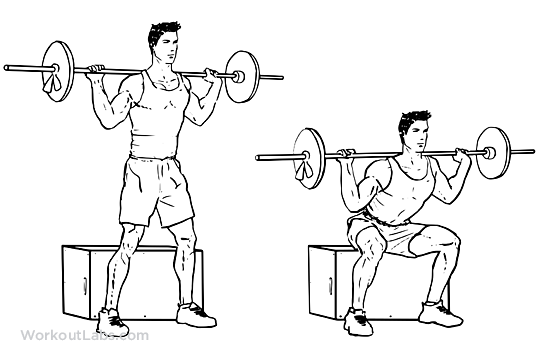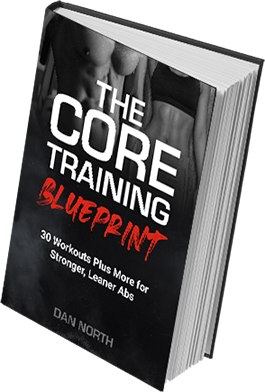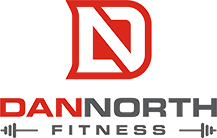Let’s break down the box squat.
First off, what is the box squat? It’s exactly what it sounds like. It’s when you squat…onto a box.
Mind. Blown.
Why should you box squat?
- IT IS SAFER THAN MOST OTHER BARBELL SQUATS. PUTTING A BARBELL ON YOUR BACK OR THE FRONT OF YOUR SHOULDERS IS CHALLENGING ENOUGH FOR MOST PEOPLE DUE TO MOBILITY AND MECHANICAL ISSUES. PERFORMING A SQUAT ONTO A BOX OR BENCH OR RISER TAKES SOME OF THE ADDED STRESSES THAT BACK SQUATS HAVE ON YOUR SPINE WHEN PERFORMED CORRECTLY.
- IT IS EASIER TO LEARN AND COACH. FROM A TECHNICAL STANDPOINT, BOX SQUATS ARE A HELL OF A LOT EASIER TO LEARN FOR MOST PEOPLE AS OPPOSED TO FULL BACK SQUATS OR FRONT SQUATS. THE CONCEPT OF SITTING BACK BECOMES EASIER TO UNDERSTAND WHEN YOU HAVE SOMETHING BEHIND YOU TO AIM FOR.
- IT GETS YOU STRONGER. MOVING FROM A STOPPED POSITION LIKE A SEATED BOX SQUAT HELPS YOU LEARN HOW TO GENERATE MORE POWER AND STRENGTH, SIMILAR TO HOW DEADLIFTING INCREASES MAXIMAL STRENGTH SINCE YOU ARE PICKING UP THE BARBELL FROM DEAD WEIGHT.
- IT IMPROVES ATHLETICISM. NOT ONLY DO BOX SQUATS GET YOU STRONGER, THEY WILL MAKE YOU JUMP HIGHER AND RUN FASTER WHEN IMPLEMENTED STRATEGICALLY INTO YOUR PROGRAM.
BOX HEIGHT
Traditionally, you want the height of the box you’re squatting on to match the depth you’re seeking in the squat. Usually, you would want that to be about 90 degrees, or maybe even a touch lower.
That’s not to say that’s the only height you’re limited to when performing box squats. You can have it set higher if your goal is to overload the top portion of the squat and get a better lockout. You can also have it set lower if you want to work on a greater range of motion and increase the strength in your bottom position of the squat.
Now that we got that covered, let’s look at the set up.
BARBELL GRIP
Everyone’s grip is going to be different, so find what is comfortable for you. If you like having your hands closer together because you find it engages your upper traps more and provides a better shelf for the bar to sit on, then do that. If your shoulder mobility doesn’t allow you to have a closer grip and you like having your hands placed a little wider on the bar because you feel more balanced, then do that.
One thing that remains consistent, no matter how far apart you place your hands on the bar, is that the bar is resting on your traps, not your spine.
FOOT STANCE
Again, this is up to the individual, and is often unique to factors like limb length and height. For the most part, have your feet set about shoulder-width apart, maybe even a little wider, with your toes angled slightly outward.
BIG AIR
As with all big barbell movements, you want to create pressure in the core to stabilize the spine. In order to do that effectively, take a BIG AIR in through the stomach and hold it in order to keep constant core tension.
Don’t take a deep breath in then let it out. That’s going to relax the body and the last thing you want to be when you have a bunch of weight on your back is relaxed.
HIPS BACK
Initiate the squat by pushing your hips back. A lot of people make the mistake of pushing their knees forward at the beginning of the movement. Instead, sit back with the hips in order to load up the hamstrings and glutes and set yourself up in a powerful position for the drive back up.
SPREAD THE FLOOR
Pretend you’re standing on a sheet of paper and you’re trying to rip it apart with your feet by spreading the floor outward. This helps eliminate valgus collapse which is when your knees cave inward towards each other, which is a very weak and vulnerable position during the squat. Do this during both the eccentric and concentric phases of the lift.
STAY FORWARD OR ‘LIGHT’ ON THE BOX
Joe DeFranco uses a great analogy with his athletes when he tells them to pretend the box is a scale, and their goal is to have the scale read half their bodyweight when they squat onto it. By not putting all of the your weight and relaxing onto the box, you keep your hips active and your core engaged so you can drive back up faster and more importantly, much safer.
DRIVE UP AND PUSH WITH YOUR ARMS
Although the box squat is obviously a lower body dominant lift, you would be foolish to think you don’t have to engage the upper body if you want to perform it correctly. As you drive up by pushing through the floor, simultaneously push up against the bar with your arms. This helps keep engagement in the supportive upper back muscles.
PUSH YOUR HIPS THROUGH
Finish the movement by pushing your hips through at the top. Another common mistake I see in gyms is excessive hyperextension in the lower back where you see the J Lo butt. Think opposite of J Lo and tuck your pelvis in and engaging your glutes.
Learn how to do box squats with these two simple cues:
Other benefits of performing box squats:
- BOTTOM POSITION TRAINING FOR BACK SQUATS AND DEADLIFTS. YOU DON’T HAVE TO NECESSARILY DEADLIFT ALL THE TIME TO GET STRONGER AT PULLING THE BAR FROM THE FLOOR. BOX SQUATS TRAIN THE SAME MUSCLES USED IN THE DEADLIFT, PARTICULARLY DURING THE INITIAL PULL FROM THE FLOOR (IE. GLUTES AND HAMSTRINGS) WITHOUT THE ADDED STRESS ON THE LOWER BACK.
- MUSCLE HYPERTROPHY. LADIES IN PARTICULAR WILL APPRECIATE THE FACT THAT BOX SQUATS ARE ONE OF THE BEST EXERCISES YOU CAN DO IN THE GYM FOR OVERALL LEG AND BOOTY DEVELOPMENT. PERIOD.
If you found this article helpful or have any questions, shoot me a message down below!
Dan





